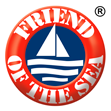Krill-Do-Antártico
AFC Prydunays’ka Niva
Information
Audit
Fishery description
Information
Species scientific name: Euphausia superba
FAO area: 34
Fishing method: Pelagic trawl
Audit
Fishery description
Antarctic Ocean – Pelagic trawl – Euphausia superba – FAO 48
Species: Euphausia superba
Gear type: Pelagic trawl
Fishing Area: FAO 48, Atlantic, Antarctic
Fishery management:
The Commission for the Conservation of Antarctic Marine Living Resources (CCAMLR) is the organisation responsible of the management of fishery resources in Antarctica, including krill. The status of the fishery is reviewed annually by the scientific committee using the best available science and information, including data from the fisheries and fishery surveys. CCAMLR has established a number of programs to collect data required for the management of the resources of the Southern Ocean, including scientific observation on fishing vessels and fisheries monitoring.
The krill fishery is reviewed annually by CCAMLR’s Working group on Ecosystem Monitoring and Management (WG-EMM). The group is in charge of assessing the status of krill and dependent populations.
Stock Status: According to the last CCAMLR report (2015), the stock does not result overexploited and overfished, and a precautionary approach is applied through the quota management system.
Discards and Bycatch: Accidental catches do not include any IUCN red listed species. All the vessels operate with on-board independent observers to monitor catches and discards. Bycatch exclusion devices are in use to reduce accidental catches.
References:
CCAMLR www.ccamlr.org
SISO www.ccamlr.org/en/science/ccamlr-scheme-international-scientific-observation-siso
CEMP www.ccamlr.org/en/science/ccamlr-ecosystem-monitoring-program-cemp
Aker Biomarine
Information
Audit
Fishery description
Information
Species scientific name: Euphausia superba
FAO area: 48
Fishing method: Pelagic trawl
Audit
Fishery description
Antarctic Ocean – Pelagic trawl – Euphausia superba – FAO 48
Species: Euphausia superba
Gear type: Pelagic trawl
Fishing Area: FAO 48, Atlantic, Antarctic
Fishery management:
The Commission for the Conservation of Antarctic Marine Living Resources (CCAMLR) is the organisation responsible of the management of fishery resources in Antarctica, including krill. The status of the fishery is reviewed annually by the scientific committee using the best available science and information, including data from the fisheries and fishery surveys. CCAMLR has established a number of programs to collect data required for the management of the resources of the Southern Ocean, including scientific observation on fishing vessels and fisheries monitoring.
The krill fishery is reviewed annually by CCAMLR’s Working group on Ecosystem Monitoring and Management (WG-EMM). The group is in charge of assessing the status of krill and dependent populations.
Stock Status: According to the last CCAMLR report (2015), the stock does not result overexploited and overfished, and a precautionary approach is applied through the quota management system.
Discards and Bycatch: Accidental catches do not include any IUCN red listed species. All the vessels operate with on-board independent observers to monitor catches and discards. Bycatch exclusion devices are in use to reduce accidental catches.
References:
CCAMLR www.ccamlr.org
SISO www.ccamlr.org/en/science/ccamlr-scheme-international-scientific-observation-siso
CEMP www.ccamlr.org/en/science/ccamlr-ecosystem-monitoring-program-cemp
Insung Corporation
Information
Audit
Fishery description
Information
Species scientific name: Euphausia superba
FAO area: 48
Fishing method: Midwater trawl
Audit
Fishery description
Antarctic Ocean – Pelagic trawl – Euphausia superba – FAO 48
Species: Euphausia superba
Gear type: Pelagic trawl
Fishing Area: FAO 48, Atlantic, Antarctic
Fishery management:
The Commission for the Conservation of Antarctic Marine Living Resources (CCAMLR) is the organisation responsible of the management of fishery resources in Antarctica, including krill. The status of the fishery is reviewed annually by the scientific committee using the best available science and information, including data from the fisheries and fishery surveys. CCAMLR has established a number of programs to collect data required for the management of the resources of the Southern Ocean, including scientific observation on fishing vessels and fisheries monitoring.
The krill fishery is reviewed annually by CCAMLR’s Working group on Ecosystem Monitoring and Management (WG-EMM). The group is in charge of assessing the status of krill and dependent populations.
Stock Status: According to the last CCAMLR report (2015), the stock does not result overexploited and overfished, and a precautionary approach is applied through the quota management system.
Discards and Bycatch: Accidental catches do not include any IUCN red listed species. All the vessels operate with on-board independent observers to monitor catches and discards. Bycatch exclusion devices are in use to reduce accidental catches.
References:
CCAMLR www.ccamlr.org
SISO www.ccamlr.org/en/science/ccamlr-scheme-international-scientific-observation-siso
CEMP www.ccamlr.org/en/science/ccamlr-ecosystem-monitoring-program-cemp
Deris S.A.
Information
Audit
Fishery description
Information
Species scientific name: Euphausia superba
FAO area: 48
Fishing method: Pelagic trawl
Audit
Fishery description
Antarctic Ocean – Pelagic trawl – Euphausia superba – FAO 48
Species: Euphausia superba
Gear type: Pelagic trawl
Fishing Area: FAO 48, Atlantic, Antarctic
Fishery management:
The Commission for the Conservation of Antarctic Marine Living Resources (CCAMLR) is the organisation responsible of the management of fishery resources in Antarctica, including krill. The status of the fishery is reviewed annually by the scientific committee using the best available science and information, including data from the fisheries and fishery surveys. CCAMLR has established a number of programs to collect data required for the management of the resources of the Southern Ocean, including scientific observation on fishing vessels and fisheries monitoring.
The krill fishery is reviewed annually by CCAMLR’s Working group on Ecosystem Monitoring and Management (WG-EMM). The group is in charge of assessing the status of krill and dependent populations.
Stock Status: According to the last CCAMLR report (2015), the stock does not result overexploited and overfished, and a precautionary approach is applied through the quota management system.
Discards and Bycatch: Accidental catches do not include any IUCN red listed species. All the vessels operate with on-board independent observers to monitor catches and discards. Bycatch exclusion devices are in use to reduce accidental catches.
References:
CCAMLR www.ccamlr.org
SISO www.ccamlr.org/en/science/ccamlr-scheme-international-scientific-observation-siso
CEMP www.ccamlr.org/en/science/ccamlr-ecosystem-monitoring-program-cemp
China National Fisheries Corp.
Information
Audit
Fishery description
Information
Species scientific name: Euphausia superba
FAO area: 48
Fishing method: Pelagic trawl
Audit
Fishery description



